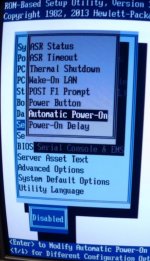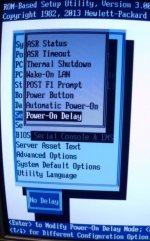Hello,
I did a test with my UPS, but the result is not quite what I expected
Here are my settings :
- Disconnection of the UPS power plug from the mains. The UPS immediately switches to battery power.
- After about 40 seconds, the system starts its shutdown protocol
- the server has shut down. Then it started to reboot.
- the UPS shut down, which caused the server to shut down abruptly.
- reconnecting the UPS power plug
- the UPS automatically turned on again
- the server automatically restarted
What bothers me is that the server started to reboot when the UPS had not yet shut down. And when the UPS shut down, it shut everything down abruptly.
What I was looking for was for the UPS to shut down after the server and when the power came back on, the UPS and then the server would restart.
The problem is that the "shutdown -r now" command causes an immediate reboot.
Is it not possible that the system waits for a while before rebooting, to give the UPS time to shut down?
Regards
I did a test with my UPS, but the result is not quite what I expected
Here are my settings :
- Shutdown mode : UPS goes on battery
- Shutdown timer : 30s
- Shutdown command : shutdown -r now
- "Power off UPS" checkbox : enabled (checked)
- Disconnection of the UPS power plug from the mains. The UPS immediately switches to battery power.
- After about 40 seconds, the system starts its shutdown protocol
- the server has shut down. Then it started to reboot.
- the UPS shut down, which caused the server to shut down abruptly.
- reconnecting the UPS power plug
- the UPS automatically turned on again
- the server automatically restarted
What bothers me is that the server started to reboot when the UPS had not yet shut down. And when the UPS shut down, it shut everything down abruptly.
What I was looking for was for the UPS to shut down after the server and when the power came back on, the UPS and then the server would restart.
The problem is that the "shutdown -r now" command causes an immediate reboot.
Is it not possible that the system waits for a while before rebooting, to give the UPS time to shut down?
Regards


